Happy New Year. By now, you’ve read or heard dozens of takes on the annual, arbitrary resolution trope—everything from weight loss with Oprah, to resolution memes, to sardonic admissions of failure by the editors of The Onion.
Of course, we all know that most of these self-improvement resolutions will fail, because all humans are flawed. That’s why we work in the nonprofit sector.
But wait…
Just because you won’t lose 10 pounds, qualify for Ironman Kona, or learn to knit a sweater (well, you might do that one if you’ve been in the sector long enough) doesn’t mean that you can’t resolve to improve your leadership in the coming year. I’m here to offer up three possible resolutions for your 2019, just in case you didn’t get enough unsolicited advice from your in-laws over the holidays.
1. Place a bet, and track your progress. More than anything, nonprofit leadership is about developing hypotheses about how your program can deepen its impact, how your donor base can expand, or how your team can develop new skills and capabilities. You make assumptions about the things you can do to achieve these outcomes. In other words, you place bets. They’re not blind, put it all on 23 black, kind of bets. They’re hypotheses informed by practice.
For 2019, decide what your big bet is for the year. And, determine how you’re going to test that bet. What are the milestones or metrics that will tell you whether you should put more chips on the table or walk away?
2. Shake up your meetings. In their seminal article, “The New Work of the Nonprofit Board”, Barbara Taylor, Richard Chait, and Thomas Holland wrote that “Boards are boards only in meetings, and yet meetings are where boards underperform most visibly.” The same observation could be extended to many staff meetings through which I’ve suffered. Too many meetings are exercises in form over function. We’re all sitting around a table listening to reports that we could have read in advance, but this is what we do.
Want to make your meetings energizing? Build them around a theme or key question. Require participants to read materials in advance. Finally, be clear on the meeting objective up front, and poll the group at the end of the meeting about whether the objective has been met.
3. Make deep sacrifice an episode, not a design feature. I’m a regular reader of the NonprofitAF Blog and its Nonprofit Happy Hour support group, and one of the recurring themes are stories of leaders seeming to take the personal sacrifices of staff for granted. We all know that hard work and lower wages come with the territory. There are going to be fundraising events where it’s all hands on deck. But there’s a difference between episodic calls for everyone to dig a little deeper and a culture of exploitation. When you and your staff are clear on where the light is at the end of the tunnel, you’re ok. When there’s no end in sight, you have a culture problem (that has at its root, poor leadership and a flawed business model).
If you find yourself in a dark tunnel, you can do two things now. First, track how staff time and capacity are utilized. If nothing else, overworked staff will appreciate the fact that you’re paying attention. Second, armed with utilization data, convene staff for an open conversation about how you might rebalance priorities away from lower-value tasks to make better use of limited capacity.
Finally, remember that even with the best of intentions, we’re all human leaders. I’ve tried and failed at all of these resolutions, but even in failure, I’ve learned something about myself as a leader. I’ve got my own leadership resolutions for 2019—writing more and getting clear on the hypothesis that underlies our business model. I’ll let you know how that goes. In the meantime, here’s wishing you luck on yours!

